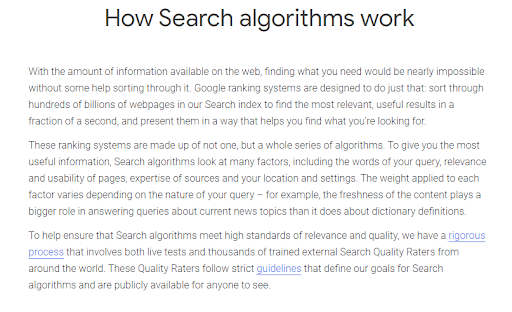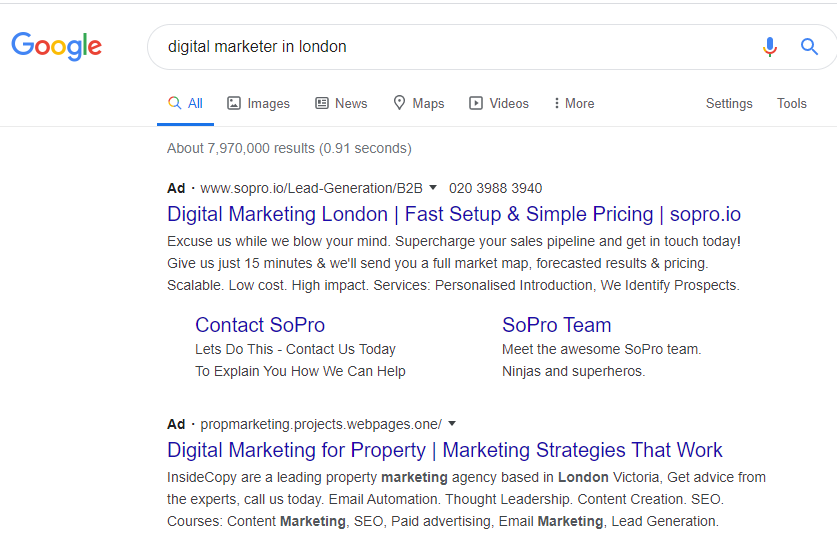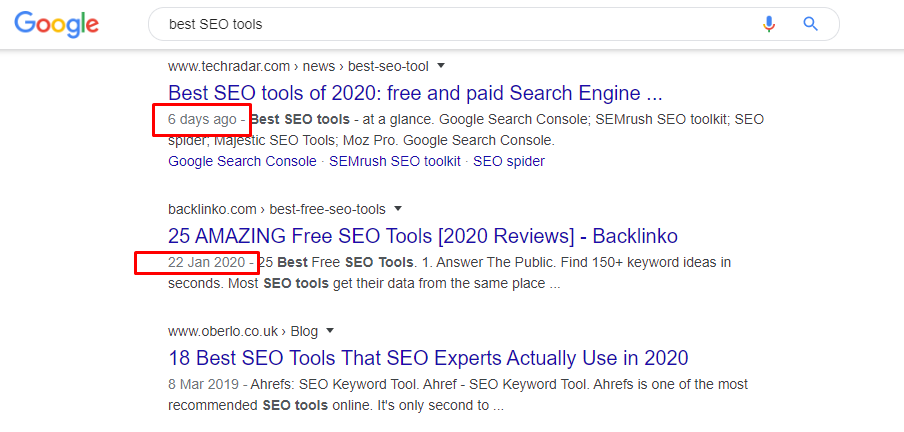What is SEO?
If you want to survive in today’s digital landscape, you need to know two things:
- How to talk to your customers
- How to talk to the search engines
To master the second part of that requirement, you’ll need to cultivate skills in search engine optimization, otherwise known as SEO.
SEO is the lifeblood behind any successful digital campaign. It’s how you customize every aspect of your digital strategy to ensure that your customers hear your voice, and your brand is seen. Without SEO, you’d end up as one of the millions of other businesses lost somewhere in this region of the search results pages:

Trust us; you don’t want that.
So, what is SEO, how does it work, and more importantly, how can you master it?
Read on to find out.
Table of Contents
What is SEO: How Do Search Engines Work?
To fully understand SEO and how it works, you’re going to need a basic knowledge of search engines. Search engines are virtual directories full of information.
They store copies of crucial pages that are dotted all over the web, making it easier for your customers to find your blogs when they want answers to essential questions, or product pages when they want to make a purchase.
Search engines do the hard work of searching for pages in their index for searchers, using a program called an algorithm. While nobody knows precisely how to manipulate this the SEO algorithm, search engine experts work hard to give us clues.
For instance, here’s what Google has to say:

Simply put, your search engines look at a handful of elements, from the words in your query, all the way through to the intent behind your search, to deliver the results that are most relevant to your needs. If you can figure out how to adjust your web presence based on the factors that Google and other search engines consider to be most essential to a successful search, you can master SEO.
So, how does SEO work?
It’s simple enough.
SEO demonstrates that your content has all the essential elements required to be the best result for the query that your customer has typed into Google.
All search engines want to deliver the best results to their users. If you can convince companies like Google that your content has what it takes to give your audience the best, most accurate information (so they don’t need to search elsewhere), then you’ll win the SEO game.
Of course, it’s a bit more complicated than this when you scratch the surface.
How to Optimize For the Google Search Engines
Famously, Google is the most popular search engine on the web.
It’s also one of the most discerning when it comes to ranking. There are more than 200 different elements that affect how you rank on Google, and the things that the search engine looks at just continues to grow.
While we don’t know all the ranking factors, we do know a few things that can make a difference to your position on the search results. That’s what we’re going to discuss today.
One thing to keep in mind when you get started is that Google ranks individual pages on your site, not full websites. That means that you can rank for different topics within the same website.
With us so far? Then let’s take a look at some of the key factors of SEO.
1.Crawlability
Google can’t place your content at the top of the search engine results pages if it doesn’t know that content exists. While Google uses several methods to check out the content available on the web, the most common option is crawling. This means that Google follows links that exists on websites it already knows, to find new pages.
For instance, your homepage might have a backlink to it from a site that already exists in Google’s index. The next time Google crawls the site that contains that link, they’ll find your website, and add you to their index too. Once your site is on the Google index, you can start to see increases in your ranks for various pages.
Unfortunately, there are a number of factors that can stop Google’s crawling tools from doing their jobs. For instance, bad internal linking on your site makes it hard for Google to find and list all of your pages. Other issues include:
- Robots.txt issues: Robots.txt is a file that informs Google of where it can and can’t go on your site. If pages are blocked on your Robots.txt file, your website won’t be crawled fully.
- No-indexed pages: No indexed tags on your HTTP header prevent Google from crawling certain pages on your site.
- No follow links: You won’t get attention from Google for internal links that use nofollow tags.
2.User-friendliness
Although it’s essential to make your website as accessible as possible to Google if you want to rank high in the search results, you also need to make sure that you’re delivering a great experience for customers too. There are plenty of ways that user-friendliness affects your rankings, from increasing the amount of time people spend on your pages, to reducing your bounce rate.
One of the biggest issues under scrutiny today is mobile-friendliness. Now that 63% of the searches on Google come from mobile devices, it’s more important than ever to ensure that your users can browse your site via mobile. What’s more, Google has announced that it’s indexing strategy became mobile-first in 2018 too.
People will often hit the back button on your site when they’re presented with a site that doesn’t load properly on mobile. We recommend checking to ensure that your pages are entirely mobile friendly with the Google mobile testing tool here.
3.Pagespeed
Pagespeed refers to the speed at which your website pages load. This is another factor in usability and user-friendliness, and it’s also crucial to your ranking on the search engine result pages. Google wants to make sure that its users aren’t sitting around waiting for pages to load for too long.
If you’re not sure how fast your pages are, consider using Google’s Pagespeed Insights tool to find out more. The quicker you can make your website work, the better.
4.Search Intent
Search Intent is one of the more recent factors to appear in the search engine algorithm for people who want to boost their SEO performance. For years, people looked for keywords for their websites without worrying about exactly what their customers needed.
However, now, Google is more concerned about providing results to searches that address the context behind what customers are searching for. For instance, there’s a big difference between what happens when you search for “digital marketing” on Google:

And digital marketer in London:

Optimizing for search intent means thinking about:
- Content type: blog posts, product pages, landing pages, etc.
- Content format: How to guides, list-style articles, and tutorials.
- Content angle: themes and selling points in top-ranking pages
Finding out what’s already ranking for different search intent keywords can help you to determine how to match your keywords and phrases to the right content to rank on Google. You can even look at the presence of other SERP features to help with intent too. For instance, if a featured snippet shows up when you search for a term with Google, this may indicate that your searcher is looking for information.
1.Backlinks
Another crucial component of Google’s SEO algorithm is known as PageRank. This basically determines how popular a page is based on the number of high-quality backlinks going to that page. Ahrefs studied a billion web pages to discover a clear correlation between high-quality backlinks and ranking potential.

The only downside is that convincing people to link to your website isn’t always easy. While there are a ton of link building tactics out there, including asking for a page to be added to a directory or writing a guest blog, there’s no one-size-fits-all option.
Ultimately, you’re going to need to experiment with a range of different link-building strategies to find one that works for you.
One thing to keep in mind when you’re developing a backlink portfolio for your website is that not all of the links you get will have the same value. Some high-authority links from websites that hold a lot of power will carry a lot more weight than others.
For instance, if you use the Ahrefs URL rating tool, you can check the general URL authority of a website page based on things like domain authority, internal links, and so on. The better the URL authority of the companies that are linking back to you, the better.
The best rule of thumb to keep in mind with authority is that you only want sites to link back to you if they have an excellent reputation on the web already. If you’re getting links from companies that Google continues to be spammy, or have no value, then you’re going to look spammy too.
3.Content Quality
Remember, the most important thing for Google is to ensure that it’s ranking the most valuable and useful content at the top of the search pages. To do this, Google looks at three crucial concepts:
Expertise, Authority, and Trustworthiness.
E-A-T guidelines improve the quality of your content if you can stick to them. However, it’s difficult to know how you can add expertise, authority, and trust to your pages as a beginner. We recommend:
- Embracing an eighth-grade reading level: Keep sentences short, concise, and easy to read.
- Use short paragraphs and bullet points to break up your text. Your customers won’t appreciate vast walls of text, and neither will Google.
- Link to authority where you can: Prove that you know what you’re talking about by linking to your resources.
- Keep it fresh: Make sure that your constantly updating your website with new content. Most of the top-ranking content on Google is the stuff that’s been published recently. For instance, look at this search for “best SEO tools.”

While freshness isn’t the only factor to consider when you’re creating high-quality content, it’s best to avoid letting your information go stale if possible.
SEO Ranking: It Isn’t Everything
Google and the other search engines look at a lot of different factors when deciding how to rank your content. Some of these factors you can affect, like authority in your content, or the quality of the blogs that you’re writing. Other things aren’t so easy to influence. For instance, your customers are going to get results based on their location, their past search history, and the things that they’ve clicked on in the past too.
In other words, the top five results that you see when you search for “Top SEO experts” might not be the top five results that your friend sees.
On top of that, your rankings, and the things that affect them, can fluctuate significantly over time. Something as small as a change in the algorithm, or as big as a global marketing shift, can throw your rankings completely off-kilter.
Because of this, it’s better to keep an eye on your traffic and how much attention you’re getting from your audience than to focus on your rankings and nothing else. SEO has its benefits, but it’s not the be-all and end-all of growing your company.
What is SEO? Finishing Thoughts
Hopefully, you’re finishing this article with a better answer in your head to the question: “What is SEO?”. The truth is that the definition of SEO and how it works keep changing as the algorithms continue to update and evolve. Unless you’re willing to stay ahead of the curve and read up on the latest trends, you’ll struggle to become a master of the search engines.
The good news is that if you are willing to keep your information up to date, knowing how to manipulate the search engines could mean that you outshine your competition, earn more sales, and strengthen your position online.
It’s all up to you.



